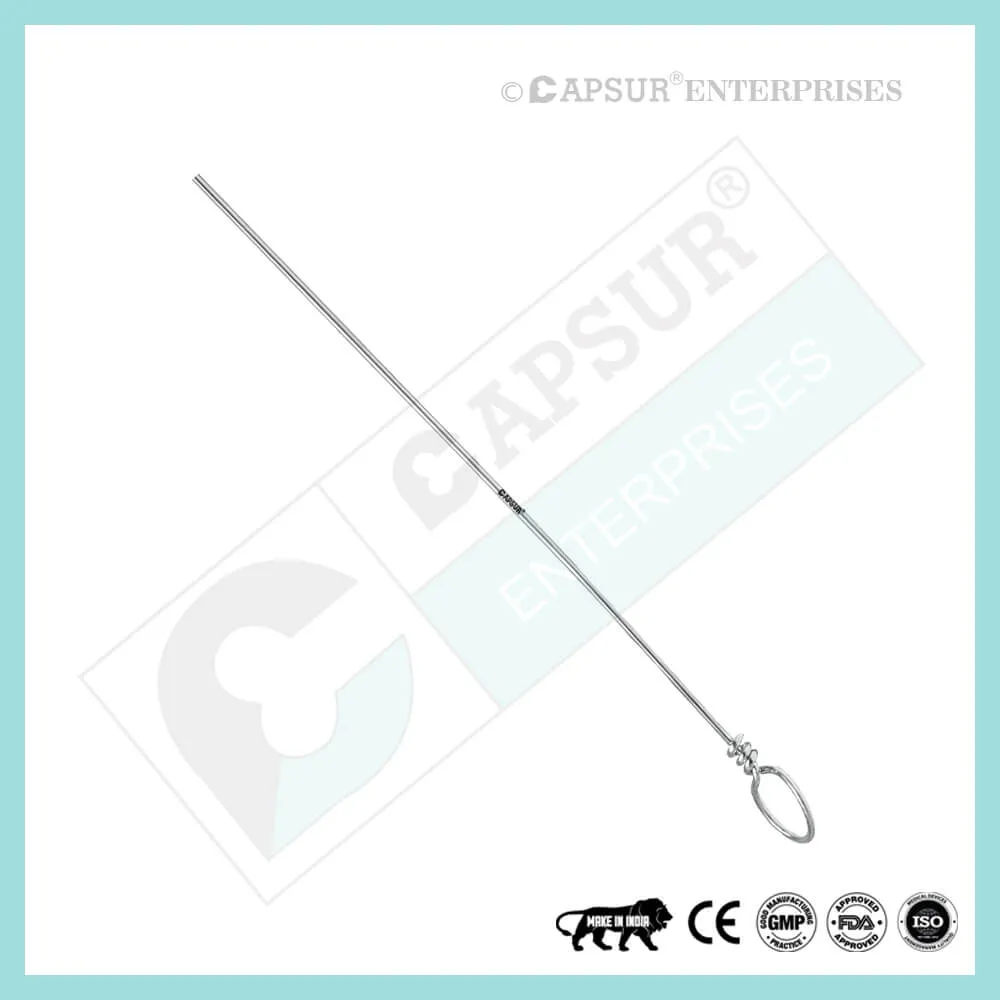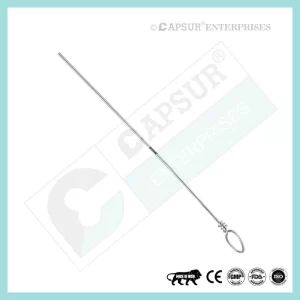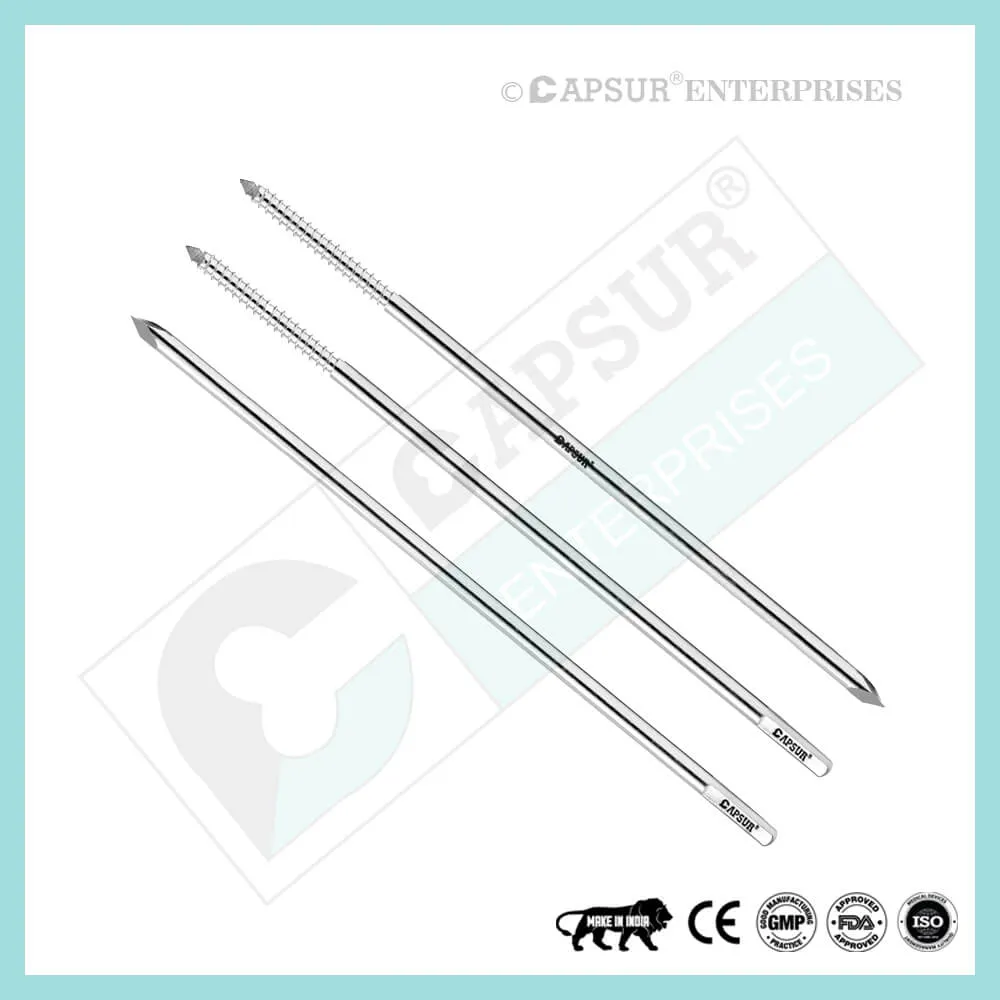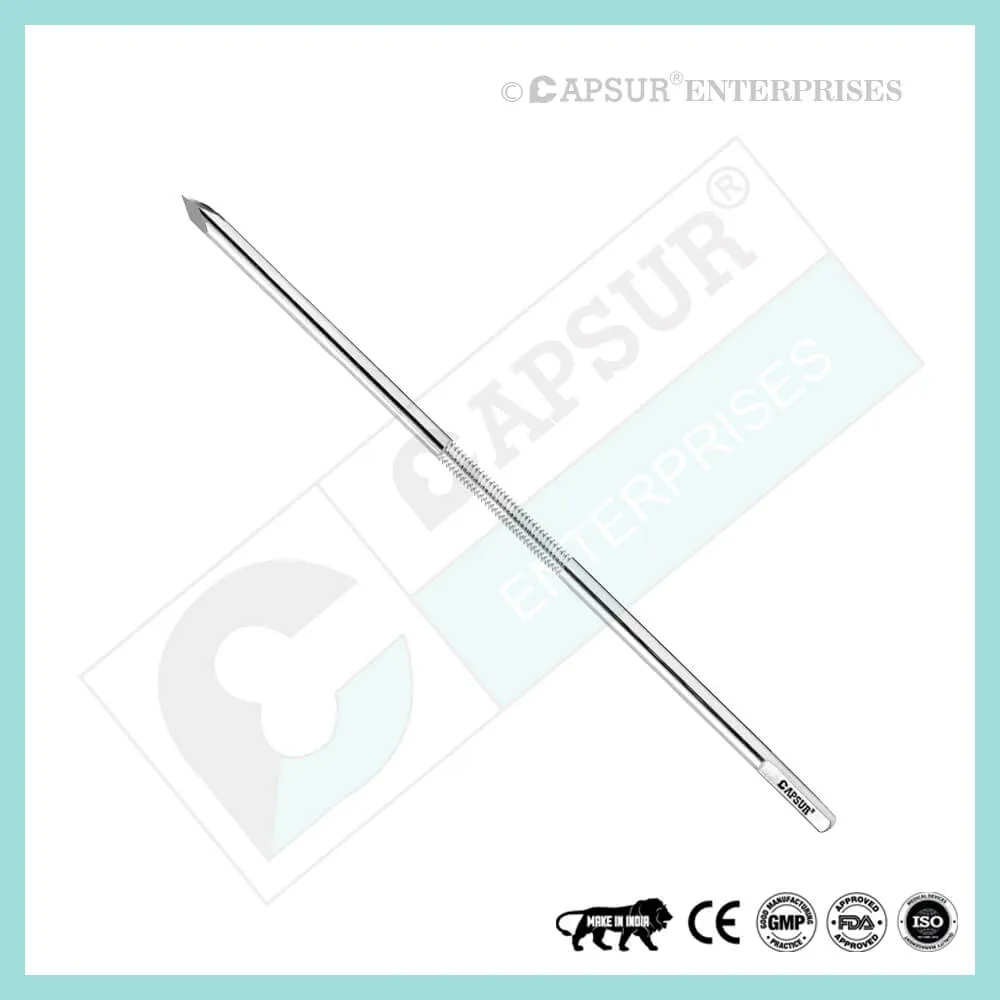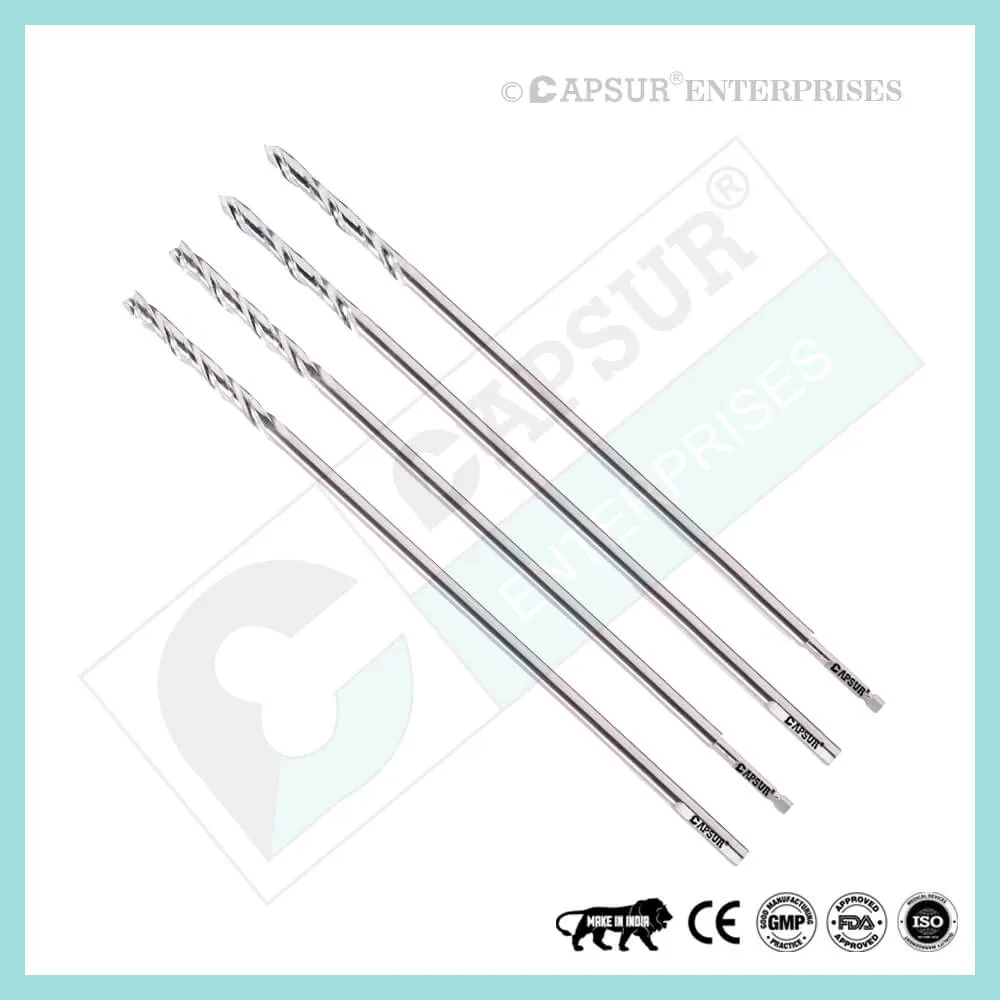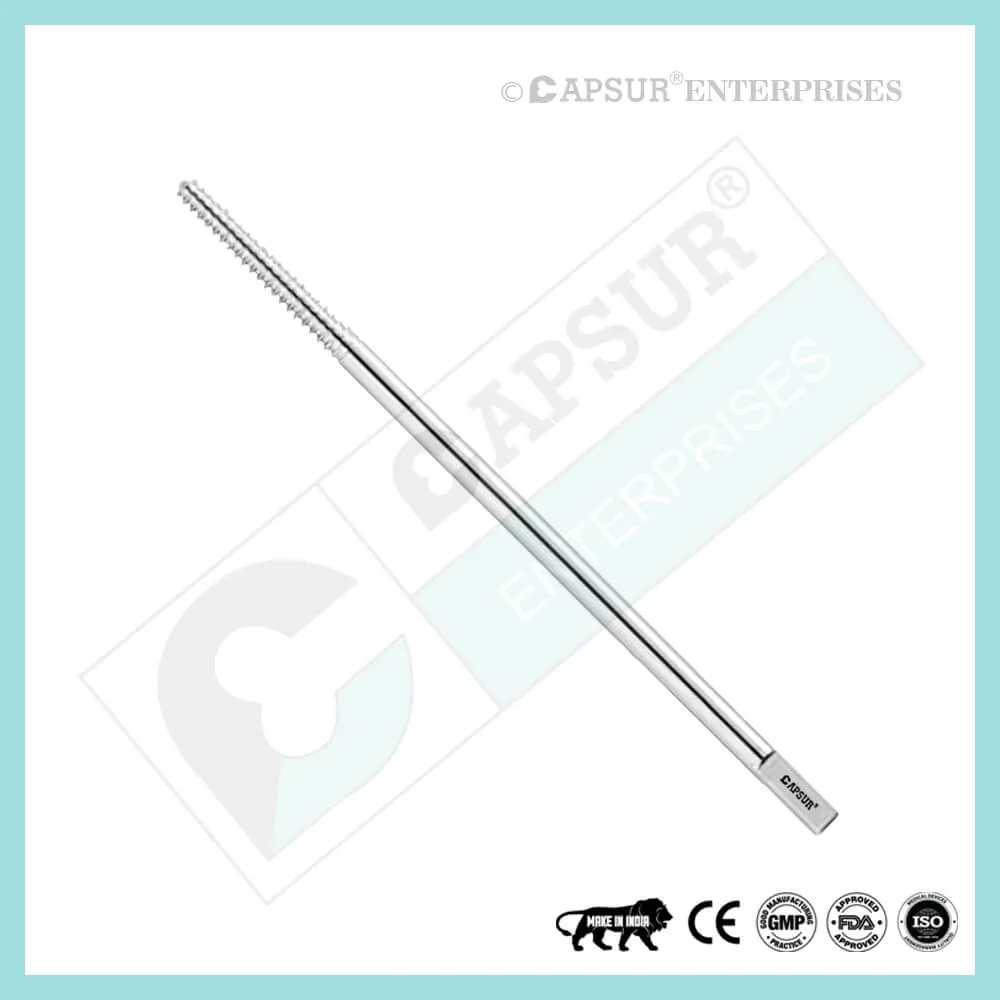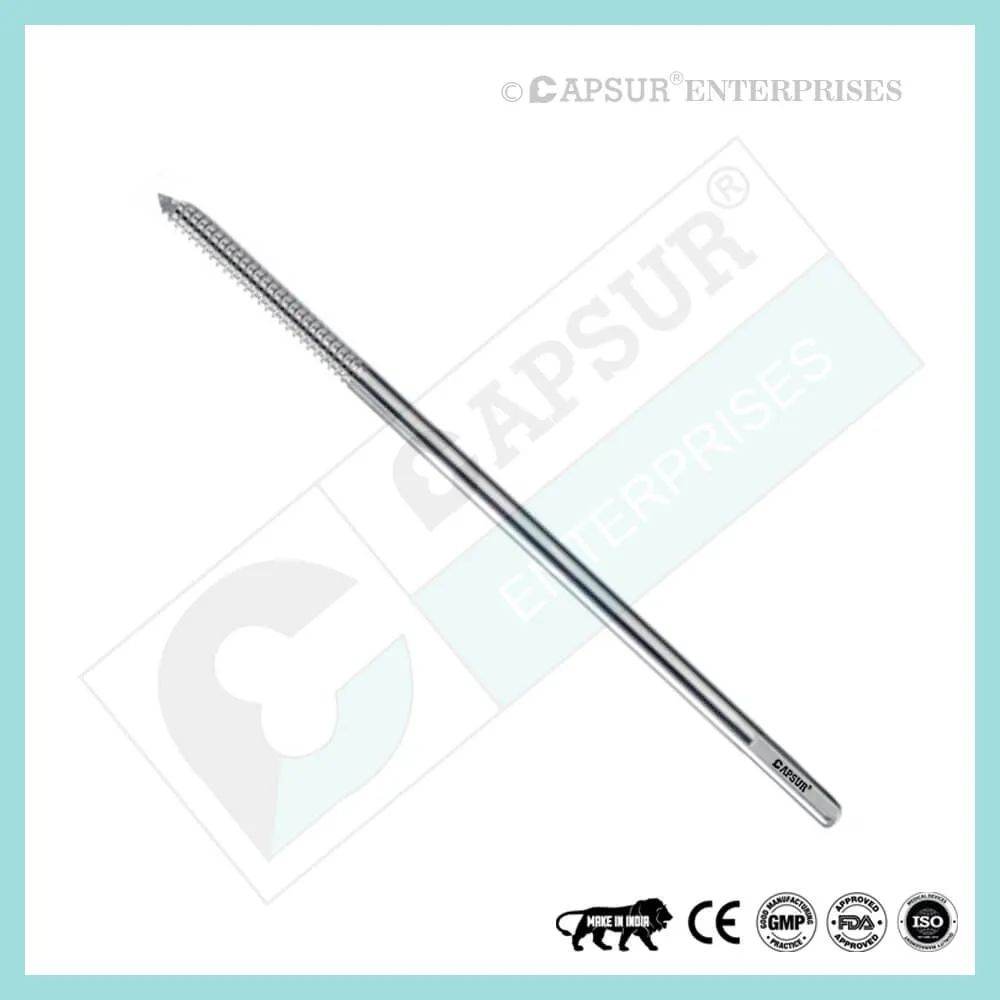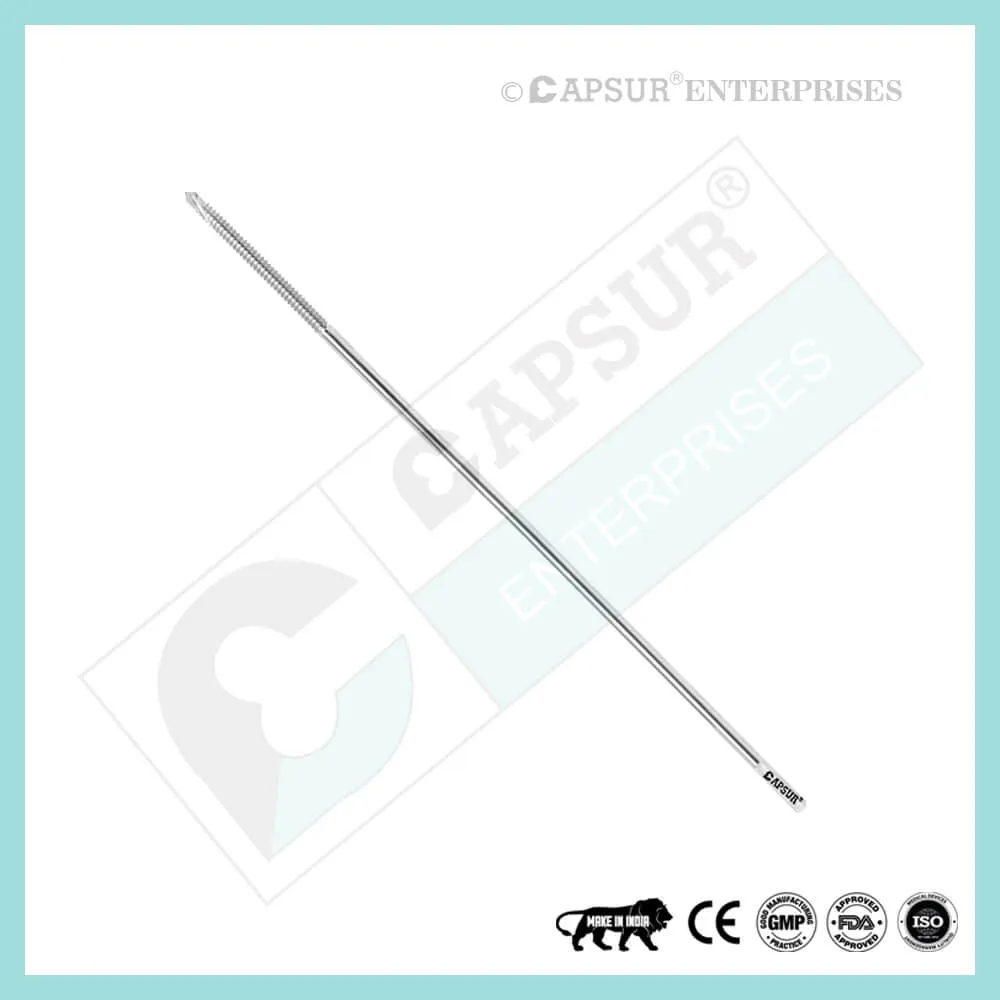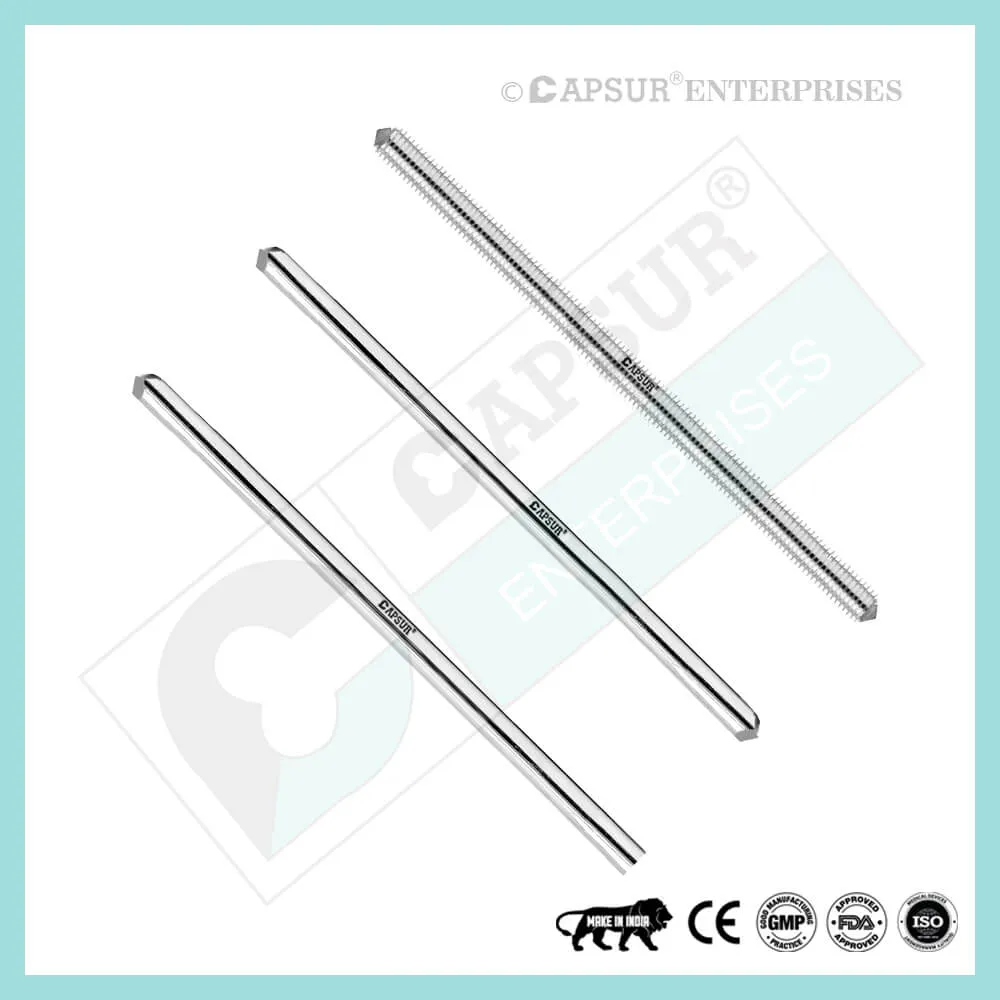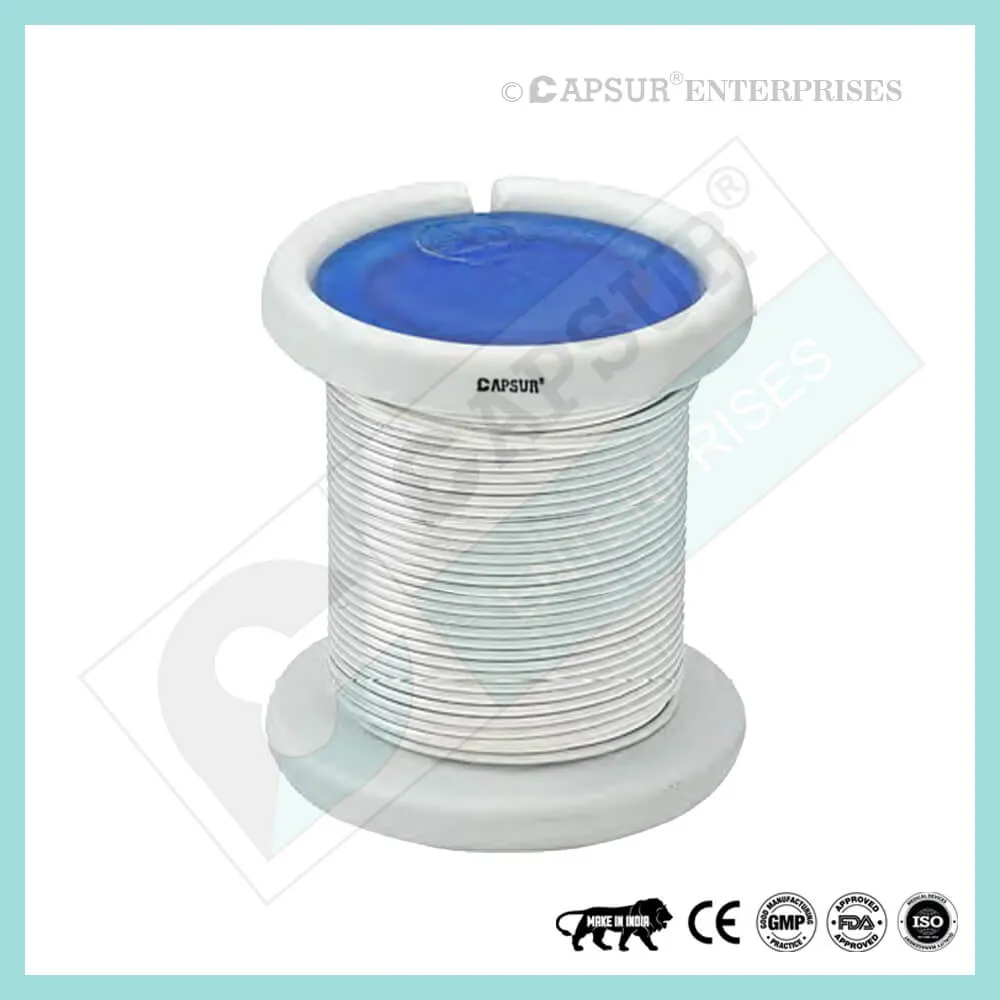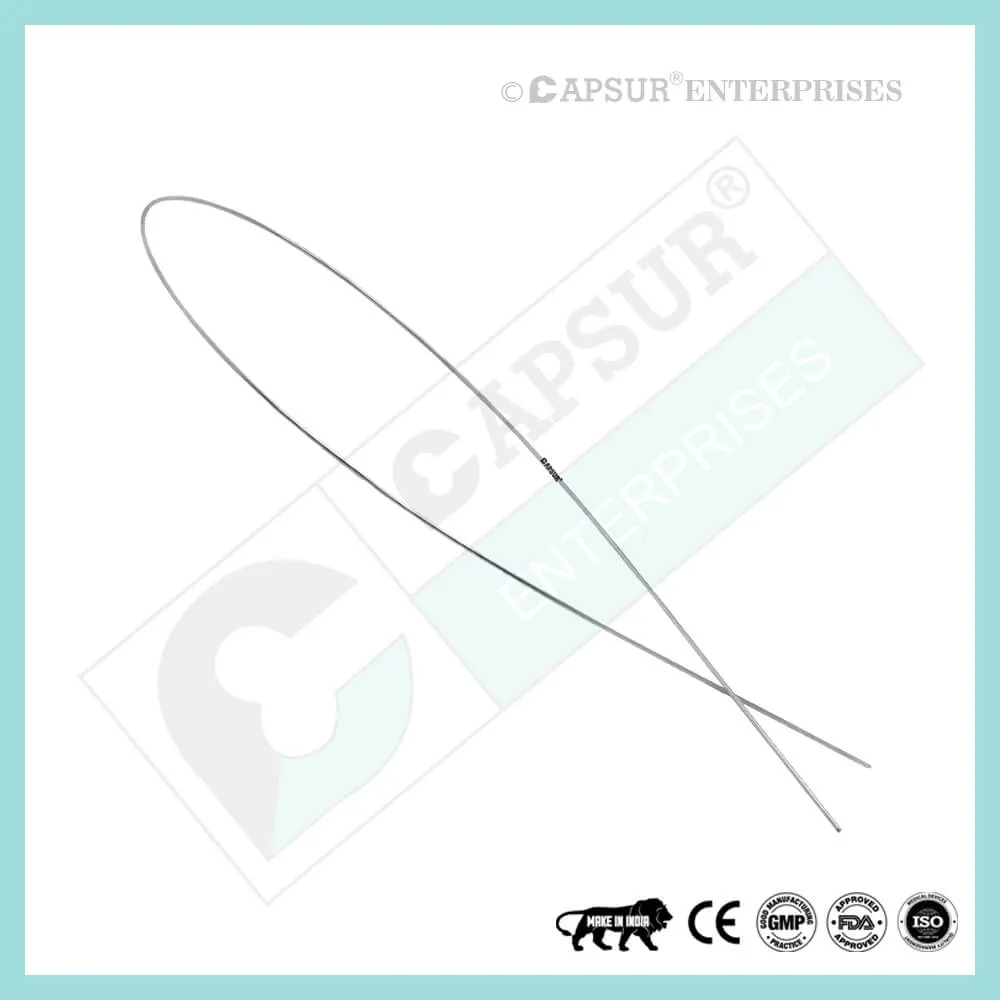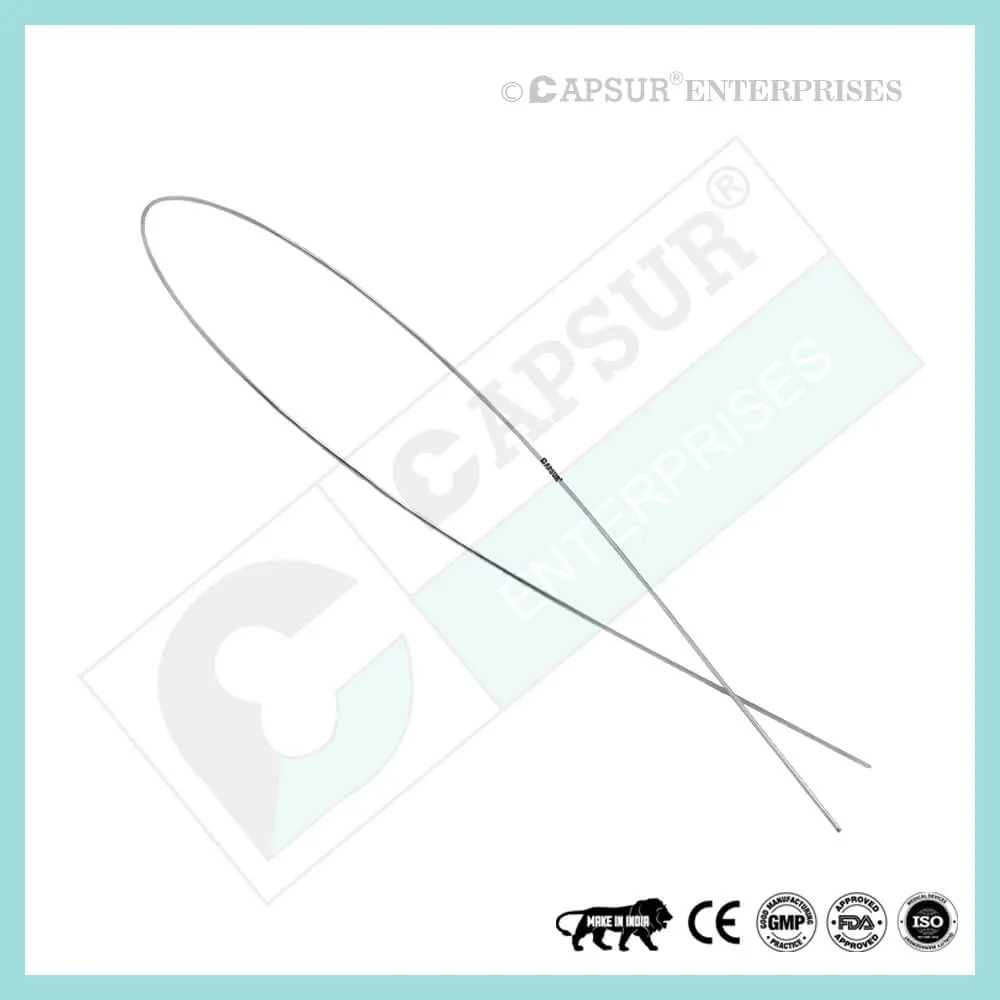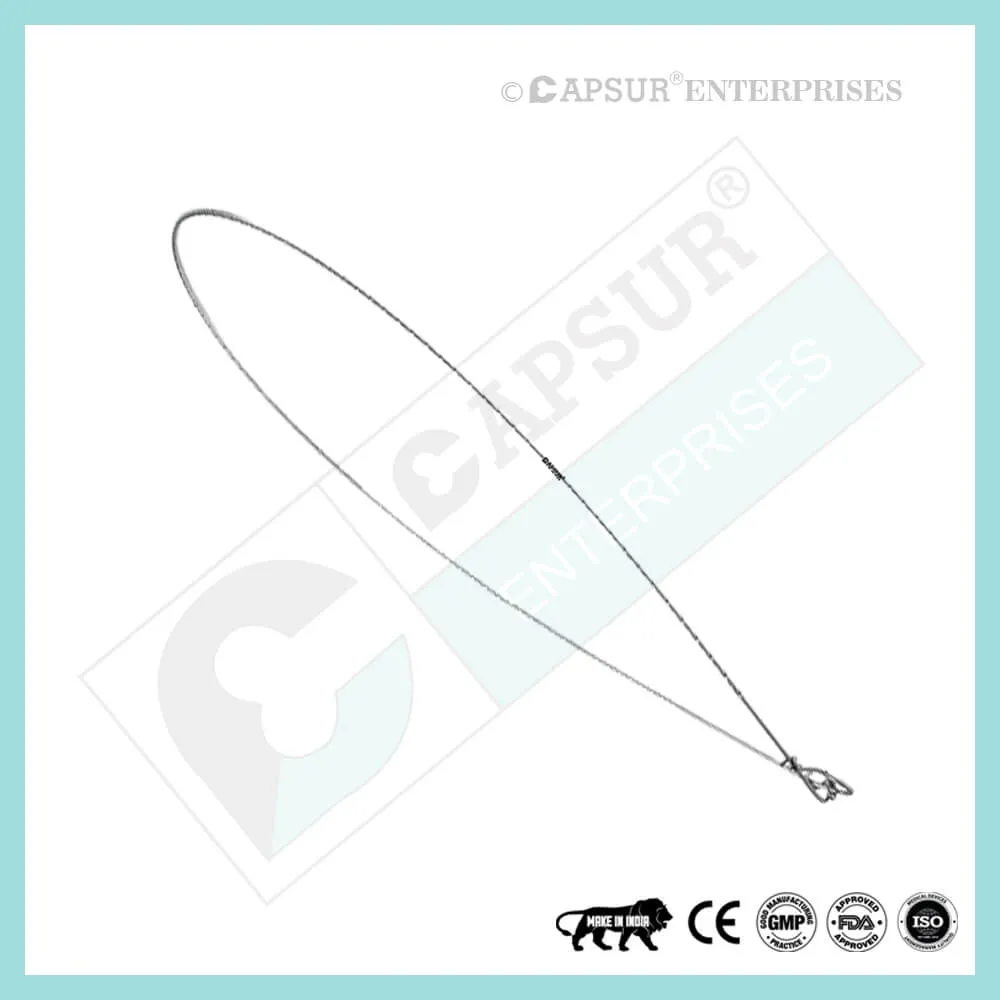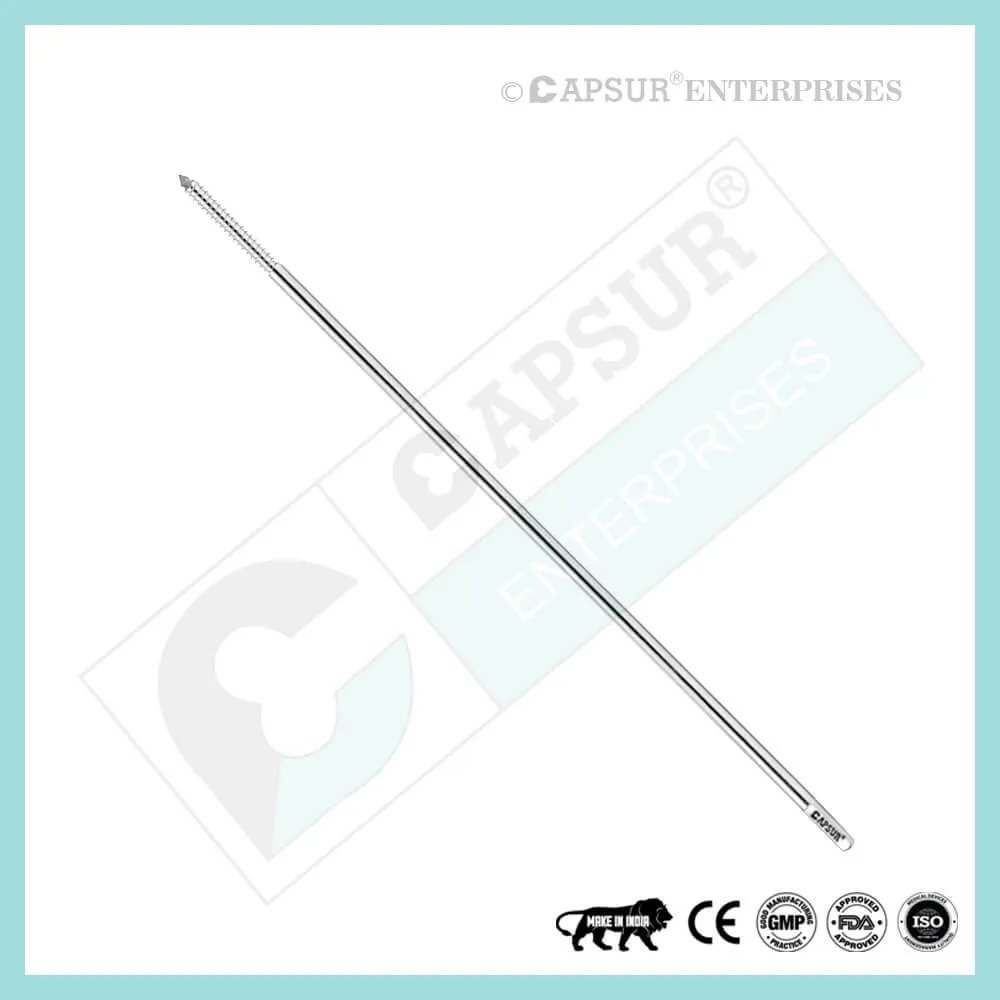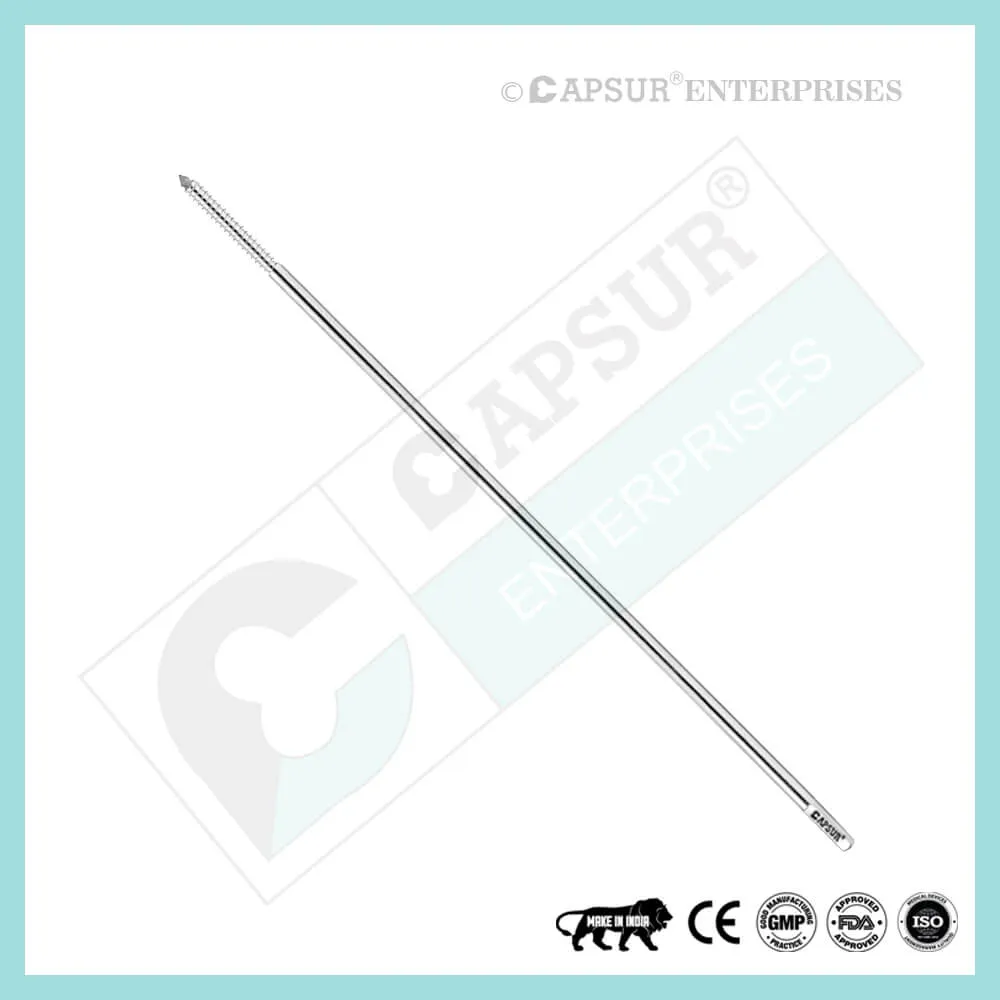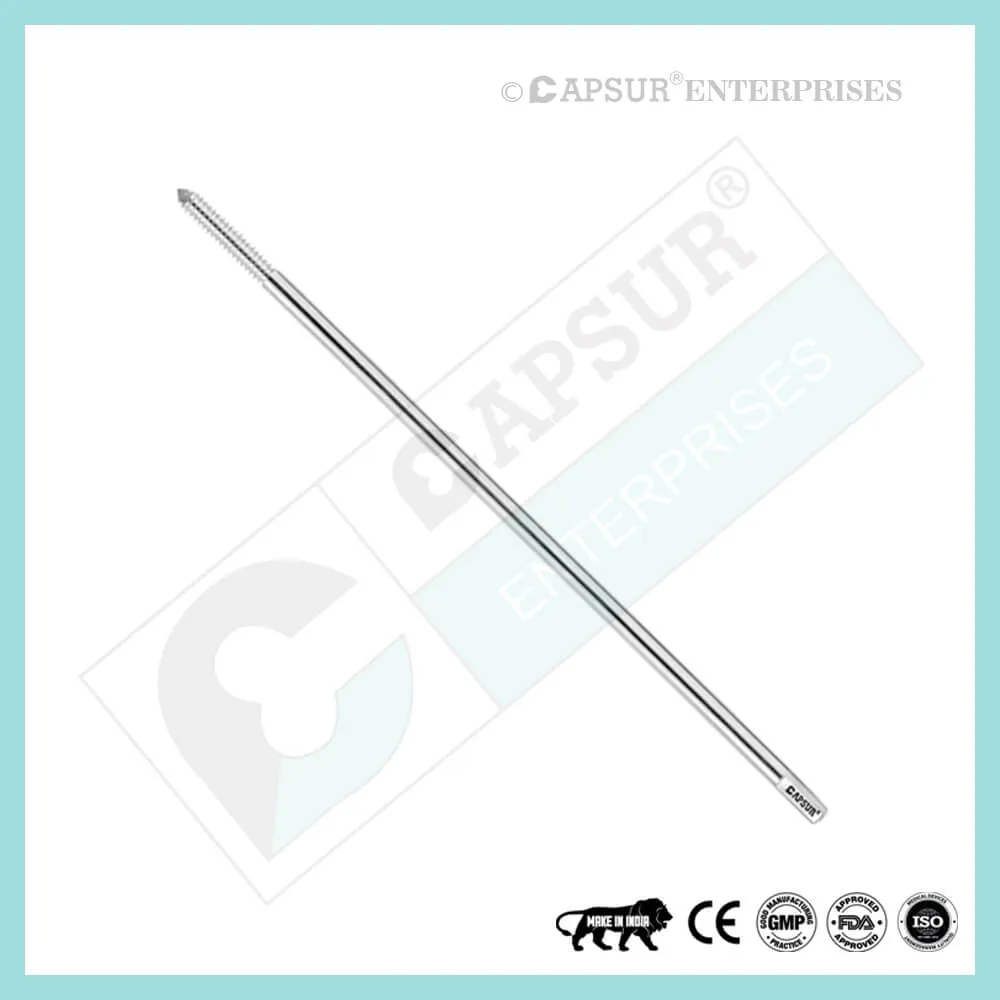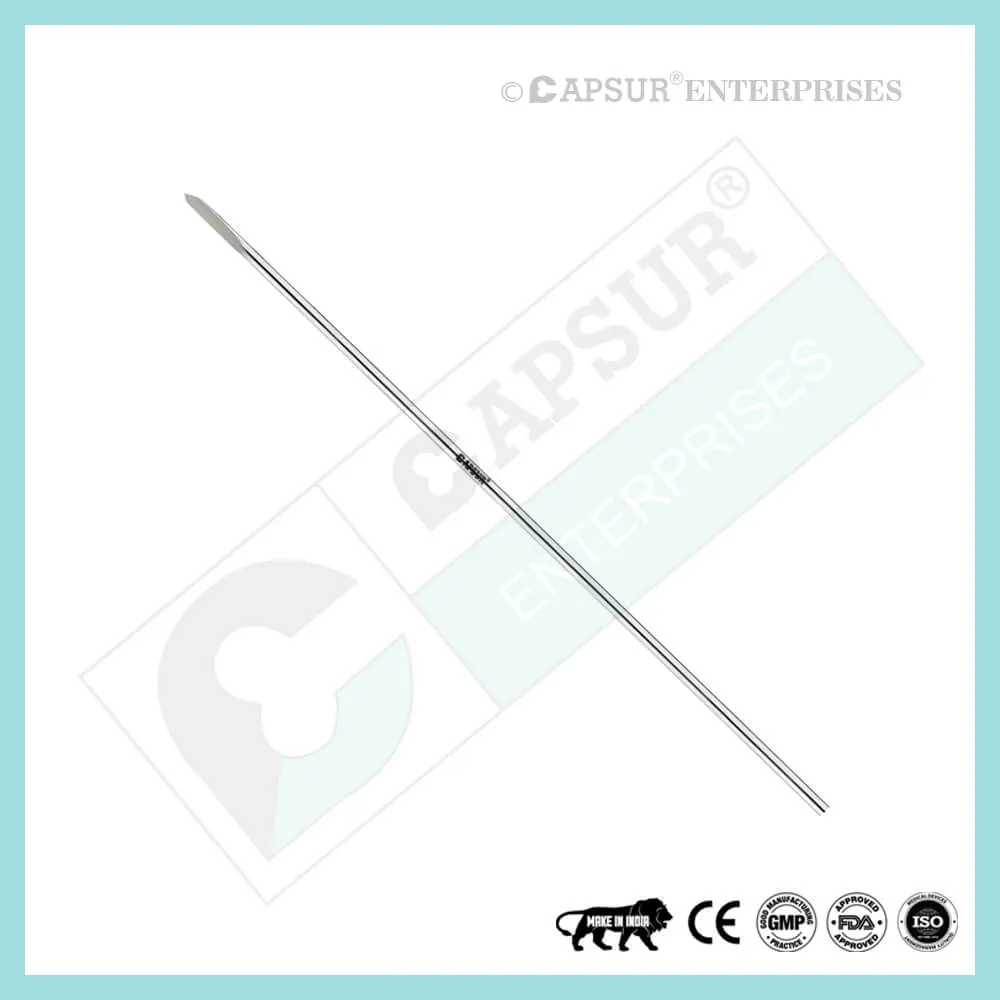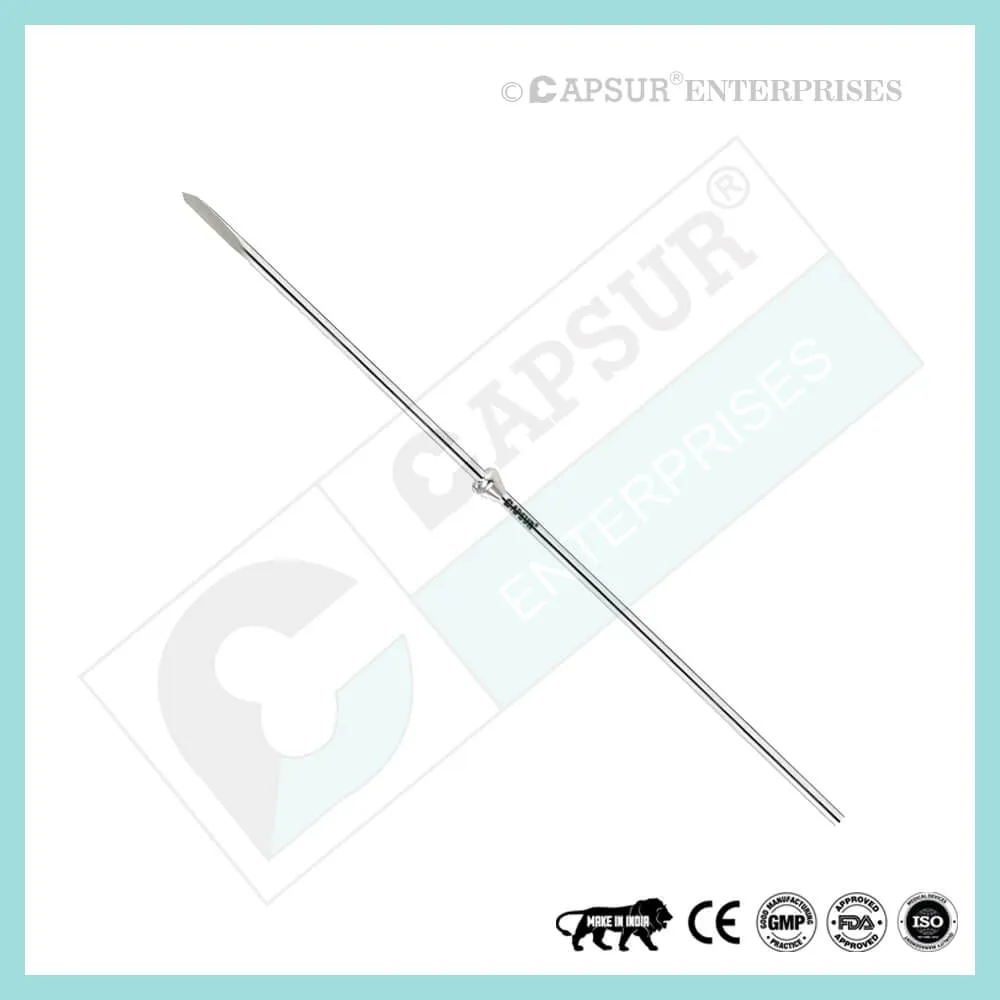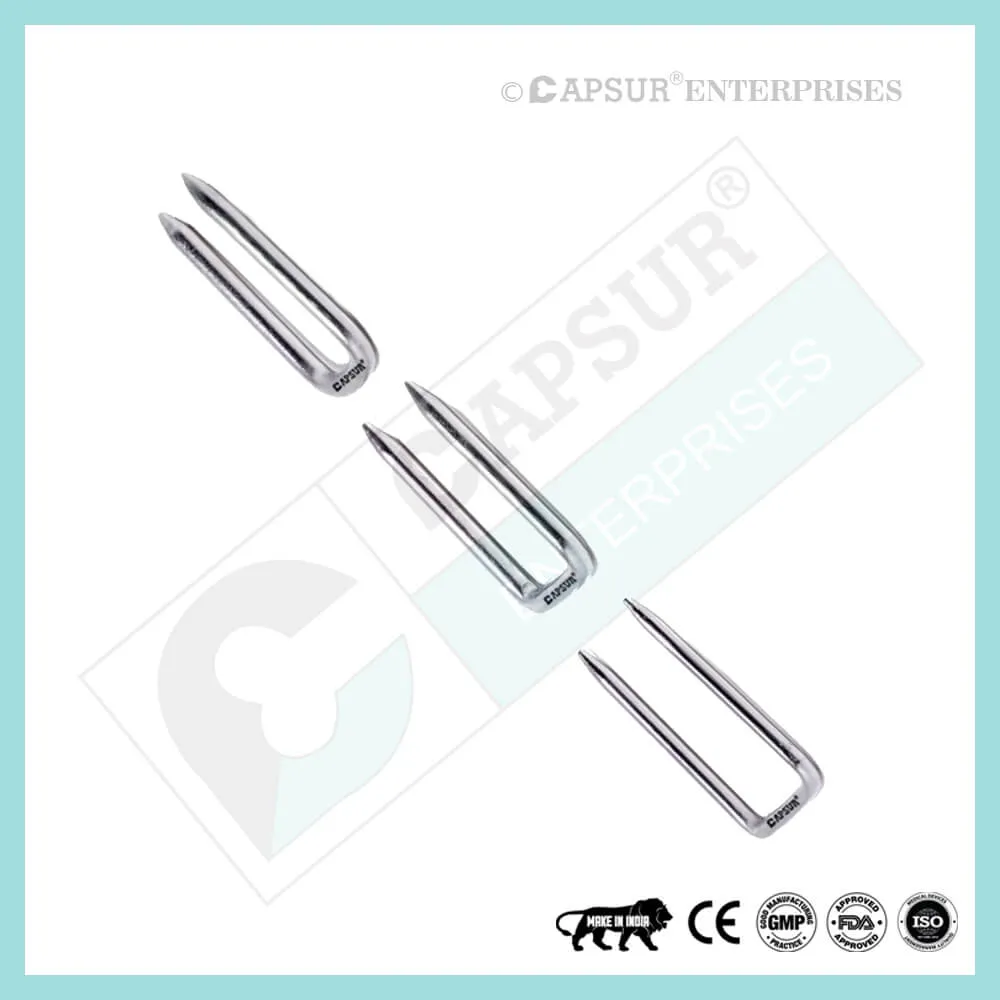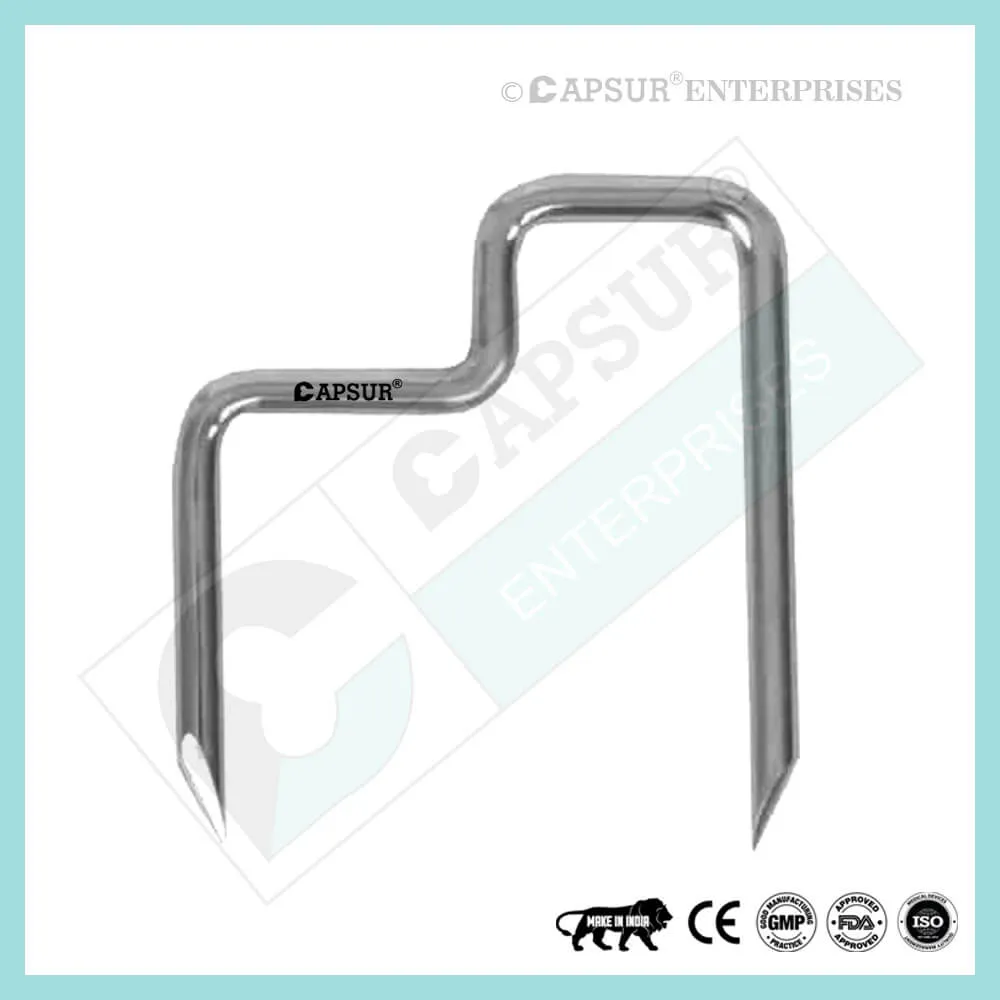Model No: 124433-A12
- Best Quality
- Affordable Pricing
- On-Time Delivery
- Customer Satisfaction
Specification of Cerclage Wire – Loop
After an operation or injury, orthopedic (Cerclage) wire is used to hold the tissues of the body together. In most cases, application entails stitching the wound closed with a needle and thread.
Orthopedic (Cerclage) wire is available in a variety of lengths and diameters. Orthopedic (Cerclage) wire diameters are expressed in millimeters or SWG (Standard Wire Gauge). Vast Orthopedic (Cerclage) Wires are constructed from stainless steel 316L.
Available sizes of orthopedic (cerclage) wire
- 16 SWG (1.60mm)
- 18 SWG (1.25mm)
- 20 SWG (0.90mm)
- 22 SWG (0.70mm)
- 24 SWG (0.55mm)
- 26 SWG (0.45mm)
- 28 SWG (0.35mm)
- 30 SWG (0.30mm)
Uses of Cerclage Wire – Loop
- Femoral fractures can be stabilized with the help of orthopedic (Cerclage) wire before a nail or plate are added. The procedure is associated with excellent results with no significant side effects, and the minimally invasive technique and instrumentation provide the advantage of minimal soft tissue dissection.
- fixation and stabilization of the proximal femur in cases of subtrochanteric fractures, periprosthetic femur fractures, or as a preventative banding in total joint hip replacement.
- acetabular fractures and patellar fractures
- Dislocation of the acromioclavicular joint
- Osteosynthesis of femoral fractures has previously been accomplished using orthopedic (Cerclage) wire. Although periosteal stripping and extensive soft tissue dissection increased the risk of bone necrosis and delayed union, the technique lost favor. The introduction of new technology and minimally invasive techniques has greatly decreased these complications. Despite the few applications for which it is currently approved, reduction and stabilization with cerclage wiring can support osteosynthesis, particularly in spiral or oblique fracture morphology or those with a butterfly fragment rather than interfragmentary screw fixation.
Other Important Info of Cerclage Wire – Loop
Orthopedic (Cerclage) Wire techniques
Orthopedic (Cerclage) Wire methods come in a wide variety. Among them are:
- enduring sutures
With this method, a single strand of suture material is stitched repeatedly. Since tension is evenly distributed throughout the continuous suture strand, this type of suture can be applied quickly and is also strong.
- ruptured sutures
This suture method closes the wound by using multiple strands of suture material. The material is cut and tied off after a stitch is made. This method results in a wound that is tightly closed. The remaining stitches will continue to hold the wound together even if one of them breaks.
- thick sutures
This kind of suture is inserted deep beneath the skin, between layers of tissue. They could be uninterrupted or stop and start. Fascial layers are frequently closed with this stitch.
- hidden sutures
When using this kind of suture, the knot is placed inside, either underneath or inside the area that needs to be sealed off. When using large sutures deeper inside the body, this kind of suture is helpful because it is typically not removed.
- handkerchief stitches
This kind of continuous suture is applied all around and pulled tight just like a bag’s drawstring. An intestinal stapling device, for instance, might be secured in your intestines using this kind of suture.
- Sutures under the skin
The dermis, the tissue layer beneath the top layer of your skin, is where these sutures are inserted. Short stitches are positioned parallel to your wound in a line. Following that, the stitches are secured at either end of the wound.
Orthopedic (Cerclage) Wire removal
The location of your orthopedic (cerclage) wires will determine when and how they are removed. The following are some general principles:
- scalp: 7 to 10 days
- face: 3 to 5 days
- chest or trunk: 10 to 14 days
- arms: 7 to 10 days
- legs: 10 to 14 days
- hands or feet: 10 to 14 days
- palms of hands or soles of feet: 14 to 21 days
Your doctor will first sterilise the area before removing your orthopedic (cerclage) wires. They will pick up one end of your suture and cut it, trying to get as close to your skin as they can. The suture strand will then be slowly removed.
The broken Orthopedic (Cerclage) Wire
Orthopedic (Cerclage) Wire encounters hostile conditions inside the human body. Although the use of austenitic stainless steel wires has largely eliminated the issues of electrochemical corrosion, direct chemical attack on the orthopedic (Cerclage), and inflammation produced in response to the suture, failure of the wires may still occur due to mechano-chemical cracking, the combined effect of insignificant stresses, typically from cold working, and insignificant chemical potentials produced by body fluids. The two spectacular complications of a broken wire highlight the need for caution when using wire sutures, even though stainless steel Orthopedic (Cerclage) Wire continues to be an acceptable material for sternotomy closure or for reattaching costal cartilages. The least amount of bending, twisting, kinking, and knotting should be used.
Orthopedic (Cerclage) Wire General Techniques
Orthopedic (Cerclage) wire is used to encircle fragments and tighten it to keep them in place. Hemi-cerclage wires are inserted through holes in the bone to stabilize nearby fragments, while full cerclage wires completely encircle the bone. Although hemi-cerclage techniques are discussed in many textbooks, it is best to avoid using them when treating most fractures. When placed, it offers poor stability between fragments and has the potential to seriously harm both the blood supply and the fragments themselves.
One of two methods can be used to tighten orthopedic (Cerclage) wires. The ends of the wire can be equally wound around one another to create a “twist wire.” An alternative is a wire with a loop at one end that can be passed through to tighten the wire around the bone. Wire tighteners made specifically for Orthopedic (Cerclage) Wires are available in both twist and looped forms. Orthopedic (Cerclage) Wires can be tightened without the aid of these wire tighteners, but the surgeon is strongly discouraged from taking this short cut. A wire tightener can apply much more tension than can be done by hand, so skipping out on one is a waste of money. The wire must be tight in order for orthopedic (cerclage) wire application to be successful. Which Orthopedic (Cerclage) Wire type—twisted or looped—is preferred? These variations are somewhat based on personal preference, and they do not significantly affect surgical success. According to research, looped orthopedic (Cerclage) wires consistently produce more tension and fragment stability while twist wires have better knot security.
Orthopedic (Cerclage) Wires are the most frequently mishandled piece of orthopedic hardware and are a major cause of postoperative complications, despite the fact that they can be helpful in the repair of fractures. A loose wire near a fracture site is essentially poison to the environment where the bone is healing. The vascular buds working to revascularize and heal the fracture are destroyed as the loose wire swings back and forth. The end result is a non-union, no healing, and no blood supply. The following guidelines must be followed to the letter if orthopedic (cerclage) wires are to be successfully used:
- The wire needs to be snug!
- The wire’s diameter must be adequate for the specific application. Choose a wire that is too heavy rather than one that is too light as a safety precaution.
- Orthopedic (Cerclage) Wires are never the only method of stabilizing a fracture.
- The long axis of the bone must be perpendicular to the placement of the wires.
- Always use multiple wires. Use at least two, preferably more, at all times.
The correct wire spacing must be observed. They must be positioned roughly 1 cm apart and at least 1/2 cm away from the fracture ends. If rules #5 and #6 cannot be fulfilled simultaneously, the fracture cannot be fixed with wires.
Fragments must be anatomically reduced and the overall fracture repair must be designed to completely eliminate the possibility of fracture collapse if wires are used to stabilize a fracture. For instance, if there is a chance that one fragment will shift and cause the collapse of the other adjacent fragments, a comminuted fracture might not be suitable for wire fixation. A mass of avascular bone fragments surrounded by frayed wires from such an incident would be a disaster waiting to happen!
Orthopedic (Cerclage) Wire c
When assessing the prognosis in each case, contraindications—which may be partial or complete—must be taken into account. Under the following circumstances, alternative management strategies may need to be taken into account:
- infections that are systemic or local, acute or chronic.
- either localized, systemic, or chronic inflammation.
- serve as a dangerous vascular, nervous, or muscular disease.
- Bone defects that would prevent the implant from being properly anchored.
- All associated illnesses that might jeopardize the implant’s success and functionality.
Warnings and Precautionary for Orthopedic (Cerclage) Wire
Before using Orthopedic (Cerclage) Wire, the surgeon and support personnel should read and understand the safety instructions in this document as well as any product-specific information in the product description, surgical techniques, and/or brochures.
Cerclage Wire is produced with the utmost care using materials of the highest quality for medical applications. As long as they are used correctly, these high-quality orthopedic wires guarantee the best working outcomes. The usage guidelines and safety advice that are provided below must be followed.
Orthopedic (Cerclage) Wire misuse can result in tissue damage, early wear and tear, instrument destruction, as well as injury to the user, patients, or other people.
It is essential that the operating surgeon actively participate in the medical care of their patients. All facets of the surgical procedure and the tools used, including their limitations, should be fully understood by the surgeon. It is the surgeon’s and the surgical team’s responsibility to take care in the selection and use of surgical instruments. Prior to using implants, sufficient surgical training must be obtained.
The following variables could harm the operation’s success:
- implanted material allergies.
- specific bone tumors.
- both osteoporosis and osteomalacia.
- disordered metabolism and systemic disease.
- abuse of drugs and alcohol.
- The implant is exposed to blows and/or excessive loading during physical activities that involve strong shocks.
- Patients who are mentally incapable of understanding and following instructions from the doctor.
- unhealthy in general.
- Effects that could be harmful
- The most frequent side effects of implantation are the ones listed below:
- Cerclage wire loosening may be caused by cyclic loading of the fixation site and/or tissue reaction to the implant.
- infection both early and late.
- additional bone fracture brought on by unusual stress or weakening of the bone matrix.
- pressure or hematoma-induced temporary or permanent neural damage.
- Hemorrhages and slow wound healing.
- Heart arrest, pulmonary embolism, and venal thrombosis are examples of vascular disease.
- Ossification that is heterotopic.
- Pain and discomfort brought on by the orthopedic (cerclage) wire’s presence.
- Failure due to mechanical forces, such as bending, loosening, or breakage of the implant.
- Implant migration that causes harm.
Preoperative Planning for Orthopedic (Cerclage) Wire
Following a thorough clinical evaluation of the patient, the operation is planned. X-rays are also necessary to provide a clear picture of the bony anatomy and any associated deformities. An entire size of Orthopedic (Cerclage) Wire must be on hand, along with the appropriate implantation tools, at the time of the procedure.
The potential risks and complications related to the use of implants should be discussed with the patient by the clinician. If the patient has allergies to any of the implant materials, it is crucial to know this before surgery. Additionally, the patient needs to be made aware that the device’s performance cannot be guaranteed because problems may reduce its lifespan.
Orthopedic (Cerclage) Wire Precautions
During reprocessing, verify that the instruments are functional and look for wear. Before using, replace any worn-out or broken instruments.
Utilizing the tools designated for this orthopedic wire is advised.
Use caution when handling equipment, and put used bone-cutting tools in a sharps container.
Always use suction and irrigation to remove any debris that may be produced during implantation or removal.
Orthopedic (Cerclage) Wire Warnings
When put through excessive force while in use, orthopedic (Cerclage) wire may break. We advise that, whenever possible and practical for the particular patient, the broken part should be removed. The surgeon will ultimately decide whether to remove the broken part based on the risk involved. Be aware that implants lack native bone’s tensile strength. Implants that are subjected to heavy loads may fail.
Sharp edges or moving joints on tools, screws, and cut plates could rip or pinch the user’s glove or skin.
Make sure to get rid of any fragments that weren’t surgically fixed.
The final decision to remove an implant rests with the surgeon, but we advise that fixation devices be taken out as soon as it is safe and practical for the particular patient and after their purpose as a healing aid has been fulfilled. To prevent refracture, adequate post-operative management should be performed after removing the cerclage wire.
Orthopedic (Cerclage) Wire General Adverse Events
Risks, side effects, and adverse events can happen during major surgical procedures. Although there are numerous possible reactions, some of the most frequent ones are: issues related to anesthesia and patient positioning (such as nausea, vomiting, dental injuries, neurological impairments, etc.), thrombosis, embolism, infection, nerve and/or tooth root damage, or injury to other crucial structures like blood vessels, excessive bleeding, damage to soft tissues including swelling, abnormal scar formation, functional impairment of the musculoskeletal system, and pain.
| Cerclage Wire – Loop |
|---|


